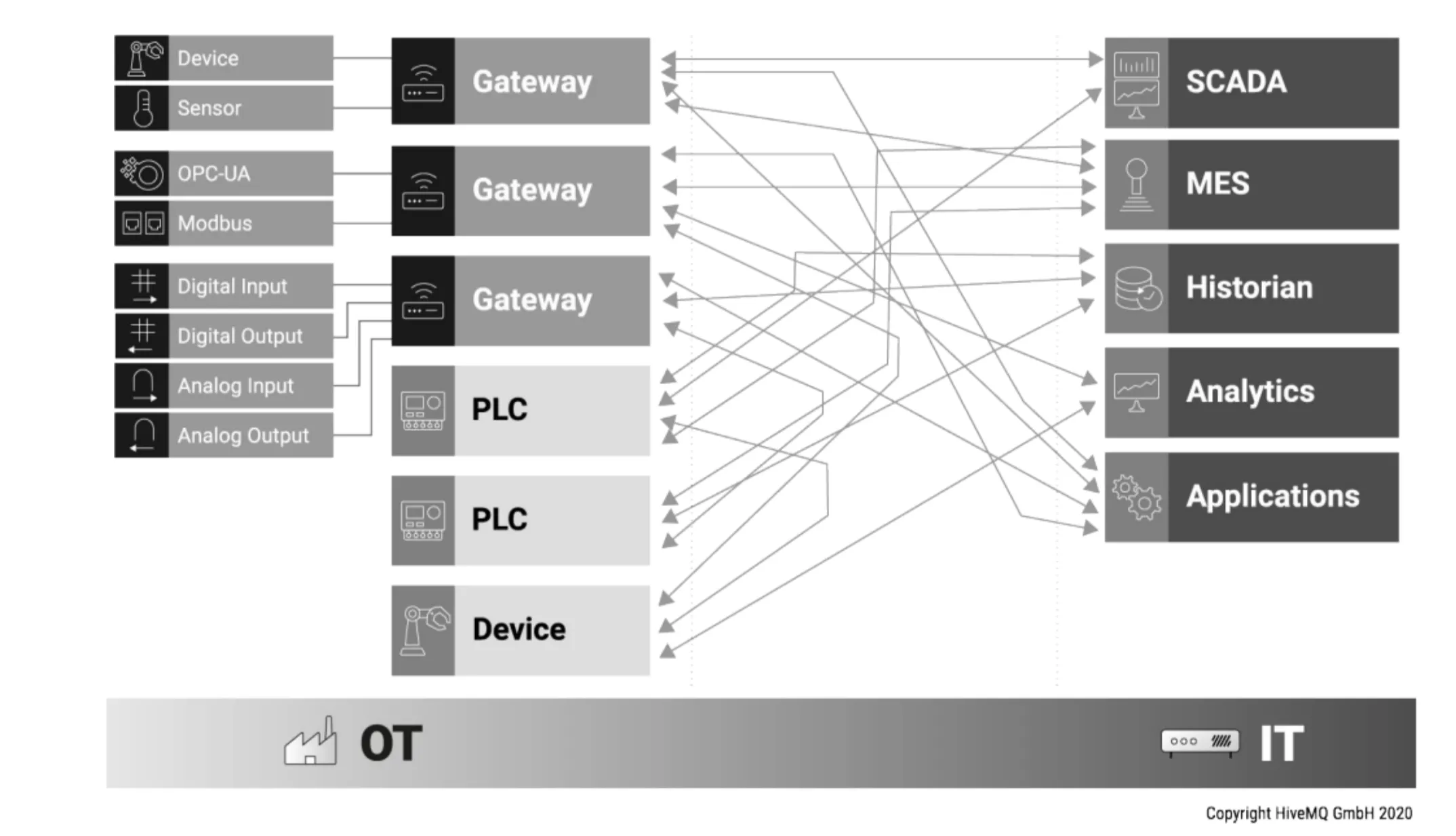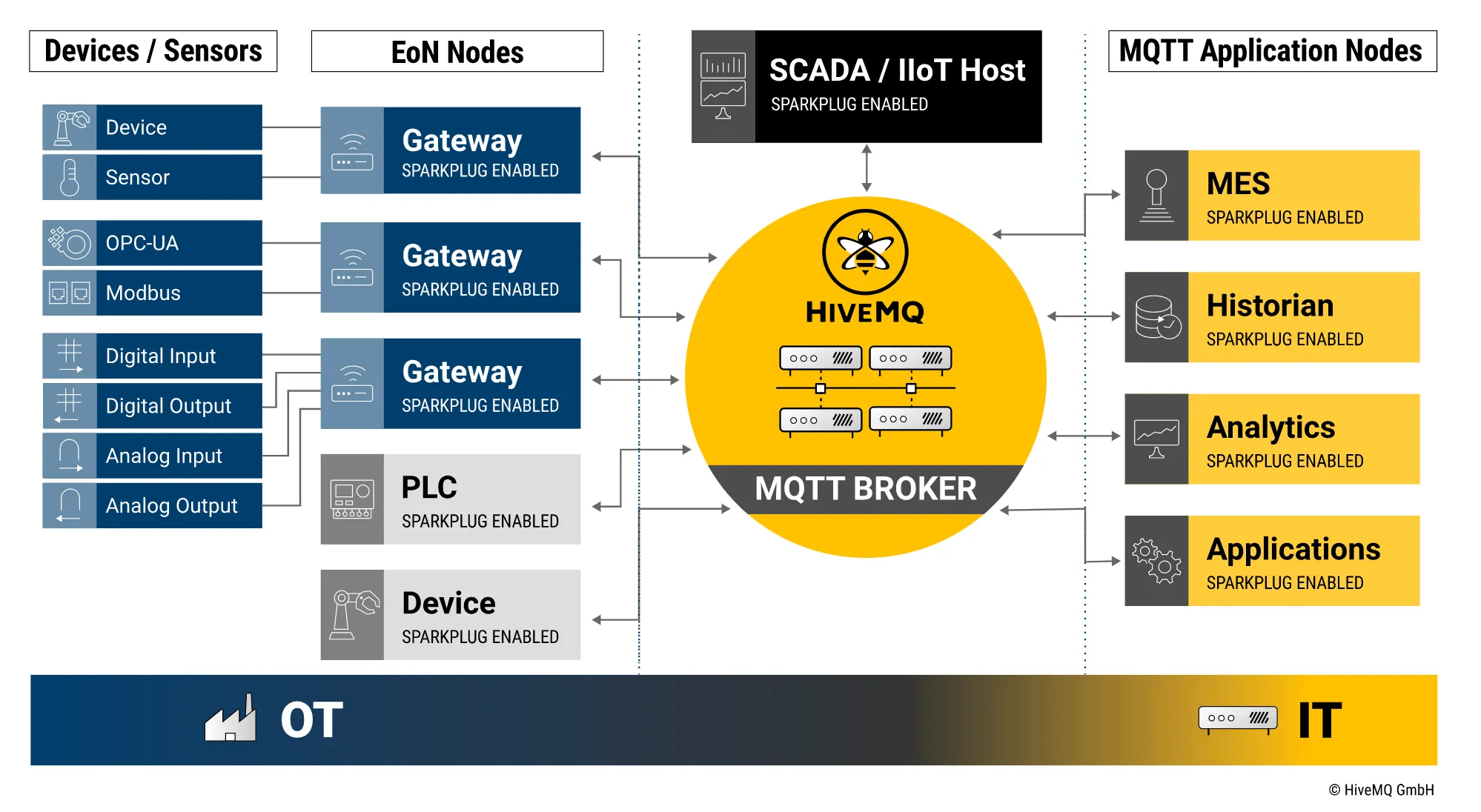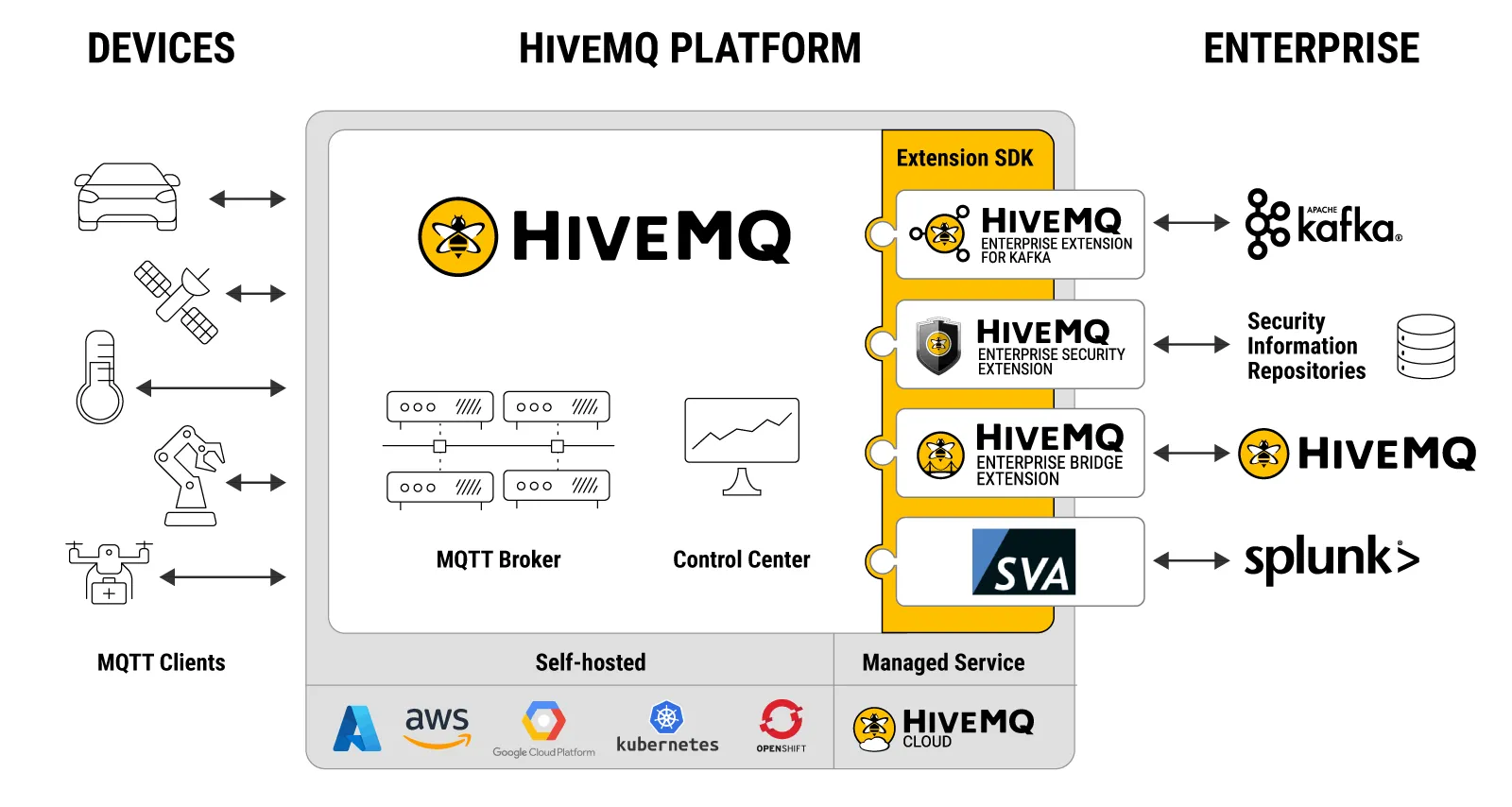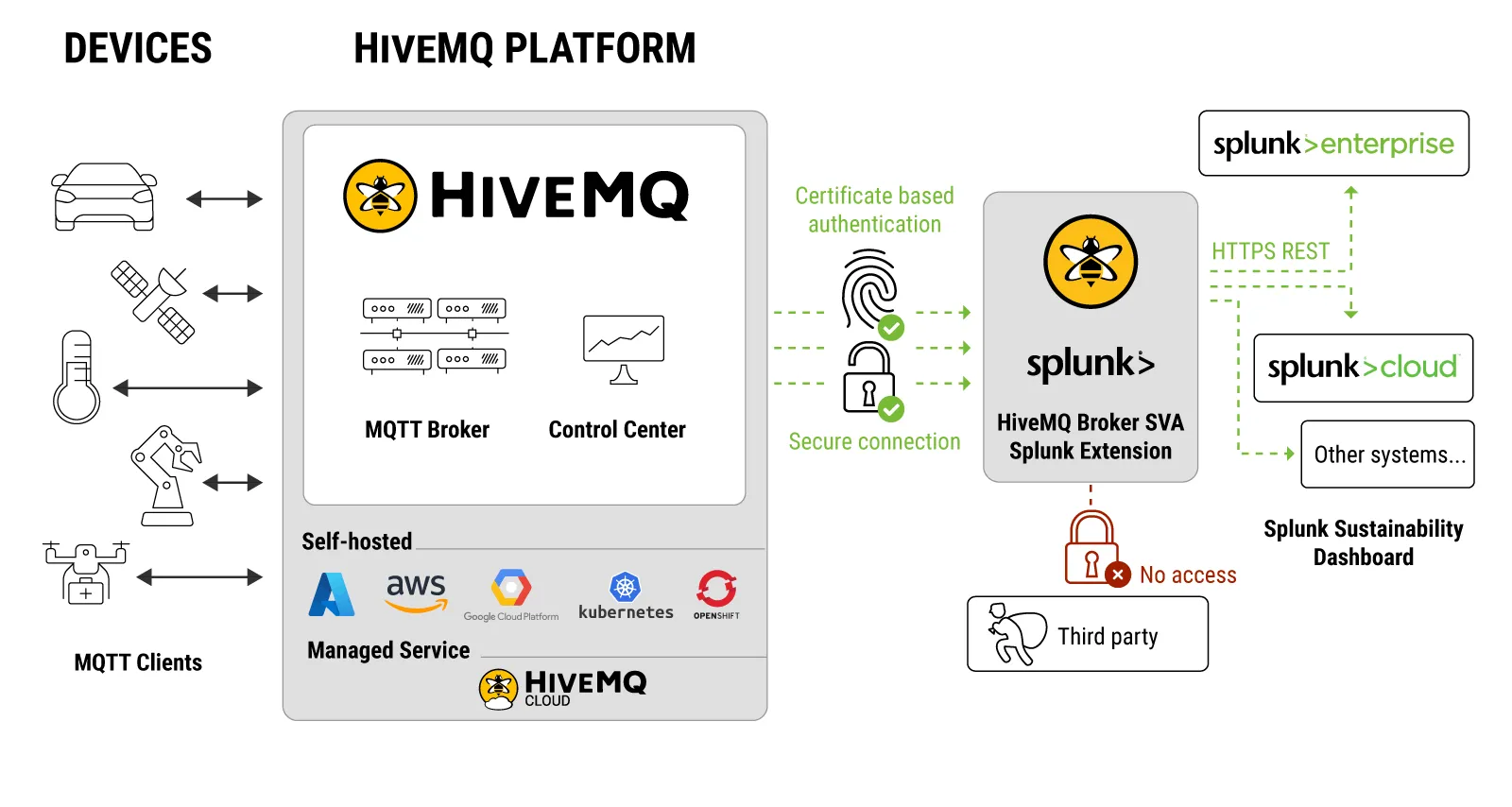A Data-Driven Approach to Sustainability in Industry 4.0 Using MQTT
Industry 4.0 is ushering in a sustainable era leveraging digitization, artificial intelligence (AI), the Industrial Internet of Things (IIoT), and similar technologies. Sustainability is undoubtedly the way forward for a better future and a greener planet. But, can we achieve our sustainability goals in a world driven by devices built with proprietary protocols and siloed OT and IT data?
Through this blog, I will share how to overcome the data connectivity challenges in OT and IT and provide you with a data-driven approach to bring better sustainability to your industry 4.0 setups, irrespective of your industry vertical.
Reality Check of Sustainability in Industry 4.0
Many industries have already implemented sustainability strategies as part of their business models. For example, the automotive sector has quickly embraced technologies like connected vehicles, shared mobility services, and autonomous driving. The growing demand for EVs and innovative mobility solutions that rely on real-time data is a testament to sustainability’s importance.
Such progress towards sustainability is good.
However, what happens when systems work in silos or can’t perform as expected in challenging circumstances such as poor network connectivity?
I recently participated in the Industry of Things World event, held in Berlin. I gave a talk with SVA and Splunk titled IoT, Cyber Security, and Sustainability – Friends for Life.
The talk explored how we could leverage the precious data generated by devices in the industry 4.0 ecosystem and connect them to enterprise applications to bring IoT, cybersecurity, and sustainability together.
During this conversation, we addressed the elephant in the room – the siloed OT and IT systems. In an ideal world, all devices are able to talk to each other. It sounds simple. But in reality, most industry 4.0 devices run on specific protocols making it challenging to connect IoT devices from the OT world to IT systems. This communication mismatch prevents us from analyzing collective data and apply machine learning which allows us to optimize our business and accelerate sustainability projects. Image illustrating the complexity that occurs in a spaghetti point-to-point integration with no interoperability and scalability.
Image illustrating the complexity that occurs in a spaghetti point-to-point integration with no interoperability and scalability.
Result: A spaghetti point-to-point integration with no interoperability and scalability.
From the above diagram, it is clear that you will have to establish 21 connections to connect your OT devices to IT systems, which means you need to configure 42 endpoints to transmit and receive data. In the field, configuring 42 endpoints is not an easy task. To complicate matters, it’s nearly impossible to scale this setup to hundreds or thousands of devices. In such cases, how do you efficiently achieve sustainability?
Here, the MQTT protocol (and in this IIoT case MQTT Sparkplug specification, built on top of MQTT) can provide tremendous benefits towards sustainable scalability.
Data Interoperability, Real-Time Data Connectivity, and Data Visualization for Sustainability
The MQTT protocol is the de-facto standard for IoT messaging. It works following the publish/subscribe (Pub/Sub) pattern. Many manufacturing and industry 4.0 companies use MQTT as it is lightweight, supports bi-directional messaging, can scale to millions of connected devices, works well over unreliable networks, and allows secure communication.
IoT devices, such as sensors in cars or factories, PLCs, and gateways, act as MQTT clients and publish messages to an MQTT broker. Other MQTT clients connect to the broker and subscribe to topics to receive certain messages. MQTT brokers, such as HiveMQ Enterprise or HiveMQ Cloud, receive published messages and dispatch these messages to the subscribing MQTT clients (e.g. backend applications).
In addition, the HiveMQ broker supports the Sparkplug specification, which provides a consistent way for equipment manufacturers and software providers to share contextual data.
This way, the MQTT broker can receive the information from various sources and publish it to one or many IT systems in parallel. IIoT Architecture with Sparkplug
IIoT Architecture with Sparkplug
For example, in the image above, the PLC is only connected to the MQTT broker and publishes all available information to it. Depending on what backend system (like, Analytics or Applications) needs this data, they are subscribing to specific topics, and the broker sends the PLC information to all subscribing IT systems. The MQTT broker acts a hub.
Suppose you want to get specific values like temperature or vibration for predictive maintenance on machines to your backend IT systems. In that case, connect the sensor to the MQTT broker, connect the backend IT systems to the broker and subscribe to the required topics as and when required.
For the backend IT systems to connect seamlessly to the MQTT broker, companies use HiveMQ extensions, build their extensions in-house using HiveMQ’s extension SDK, or use extensions created and provided by HiveMQ partners, such as SVA, as shown below.
These extensions can act as the interface between the “hub” and the IT systems, making it easier to get data to enterprise systems for further analysis and data visualization. Result: A decoupled architecture that can scale to thousands of devices with complete data interoperability. When there’s data interoperability and seamless connectivity between OT and IT systems, a data driven approach to sustainability is a reality.
Result: A decoupled architecture that can scale to thousands of devices with complete data interoperability. When there’s data interoperability and seamless connectivity between OT and IT systems, a data driven approach to sustainability is a reality.
HiveMQ, SVA, Splunk: Together Make Data-Driven Sustainability as Easy as 1, 2, 3
To demonstrate HiveMQ, SVA, and Splunk’s combined competence and how we complete the IoT data interoperability puzzle, refer to the image below. HiveMQ Integration with Splunk Sustainability Dashboard via SVA Splunk Extension
HiveMQ Integration with Splunk Sustainability Dashboard via SVA Splunk Extension
At the Internet of Things World, Berlin event, HiveMQ, SVA, and Splunk demonstrated the complete cycle of a connected car platform. In this small practical demonstration, we showed how combining data movement and communication efforts could accelerate sustainability in the automotive industry and other verticals.
The demo exhibited a HiveMQ broker connecting several autonomous racing cars. The data published by these cars were forwarded to Splunk using SVA’s HiveMQ Splunk Extension. Splunk’s Sustainability dashboard visually brought key sustainability metrics like C02 emissions and fuel efficiency to life.
The demonstration also used HiveMQ Swarm to simulate tens of thousand of cars and their respective data. It demonstrated how the HiveMQ Enterprise MQTT broker can processes tens of millions of data points from moving cars to the Splunk data analytics platform. The demo was a true example of how easy it is to accelerate your sustainability initiatives with HiveMQ and its extensions.
If you’d like to try HiveMQ and get a hands-on feel of how it connects with Splunk Sustainability dashboard, try full-featured evaluation version now. Feel free to contact me if you have any questions.

Peter Jüntgen
Peter Jüntgen was the former Director of Solutions Engineering at HiveMQ. Throughout his career, he held several roles across companies, such as codecentric AG, Huawei Technologies, OBI Smart Technologies, etc. Working in technical sales allows him and his team to learn about customer requirements and create valuable solutions for both the prospects and the HiveMQ customers.
